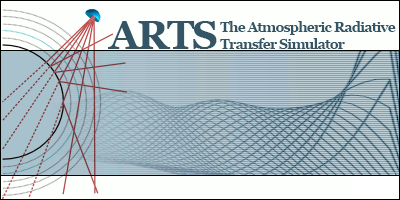
What is ARTS?
ARTS-2: 3D version for polarized radiative transfer calculations including particle scattering. It includes almost all features of the first version and also a number of additional functions.
One of the main new features is the implementation of particle scattering as for many applications, scattering of microwave radiation by ice particles in the atmosphere emerges as an important issue. The new model should be able to simulate realistic cloud cases for microwave measurements in limb sounding geometry. Modeling radiative transfer through clouds is a complicated topic for various reasons.
The cloud coverage is vertically and horizontally strongly inhomogeneous which implies that a 3D model is unavoidable for simulating realistic cases. Especially for simulating limb measurements, a 3D geometry is required as the observed region in the atmosphere has a horizontally large extent. Clouds consist of a variety of hydrometeors. There are liquid water clouds but also cirrus clouds which consist of ice particles of different sizes and shapes. Particle scattering leads to polarization effects, therefore modeling only the first component of the Stokes vector, the scalar intensity, is not sufficient. At least the first two components are required, in some cases, depending on the formation of the cloud, even all four components.
The VRTE (Vector Radiative Transfer Equation) is an inhomogeneous vector differential equation for the Stokes vector. This equation can be solved numerically using an iterative method. So far gaseous absorption is pre-calculated using the first version of ARTS and stored in a lookup table. The single scattering properties of the particles, i.e. extinction, absorption and scattering, are calculated using the T-matrix method and stored in a data base.
The Zeeman effect is also currently being implemented.
As the program is modular the user can adjust the control file according to his/her requirements. The atmospheric dimensionality can be chosen to be 1D, 2D or 3D. If clearsky calculations are performed without Zeeman effect it does not make sense to calculate all 4 Stokes components. And for special symmetries in the scattering region, which can be switched on or off, the 3rd and 4th component of the Stokes vector are negligible small. Thus the user also can also decide how many Stokes components shall be simulated.
Documentation
You can use the HTML version to browse the source text. Just point and click, and eventually you will see the real implementation of functions and classes.
If you are looking for a more comprehensive text, check out the Arts User Guide that is also distributed along with the program. Section `Documentation' in Chapter `The art of developing ARTS' there also tells you how you should add documentation headers to your code if you are an ARTS developer.
